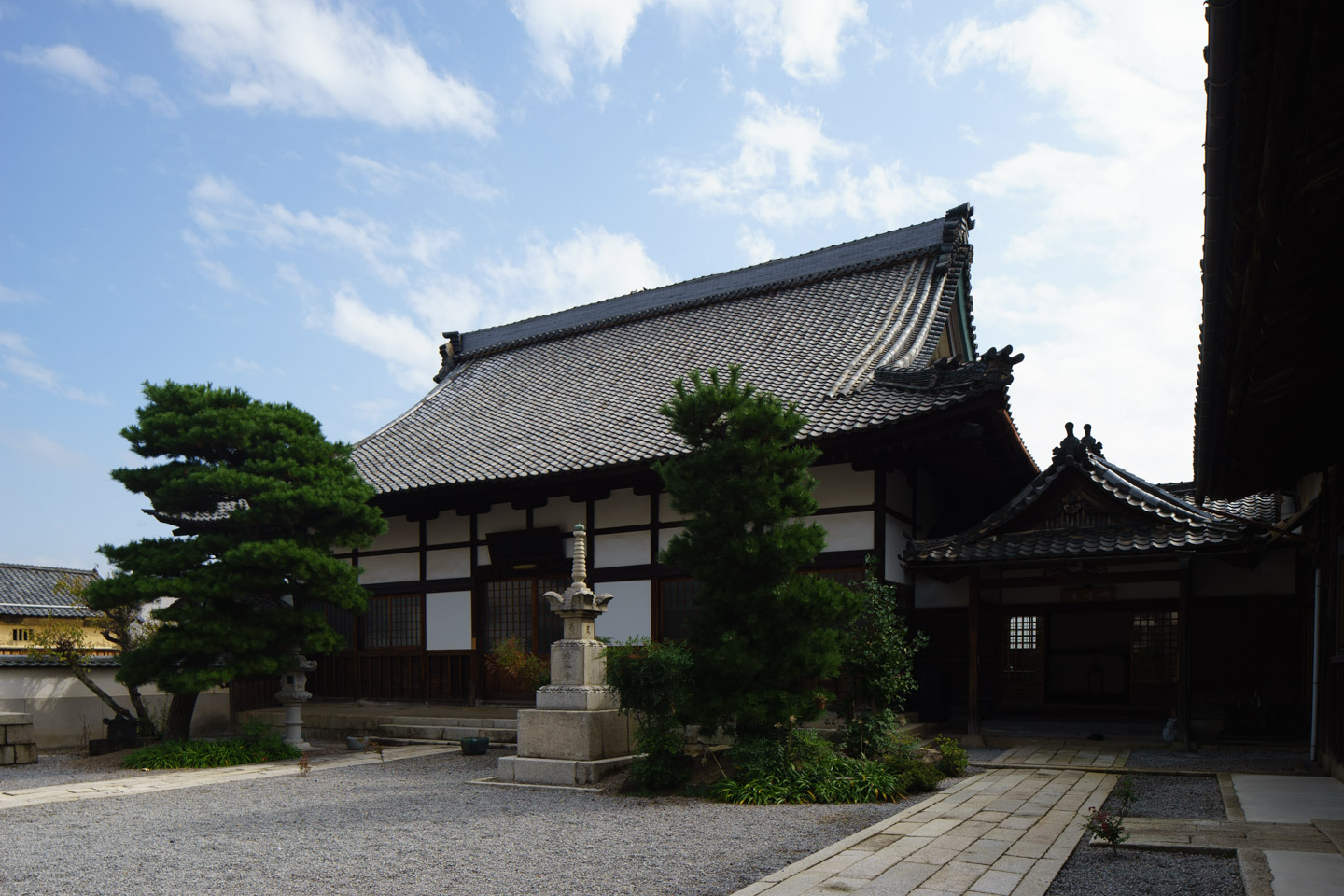Hana-Shoya
Hana-Shoya
Enjoy a sophisticated izakaya experience in Ii territory
place Area: Hikone
access_time Published: 2020.08.17
Hana-Shoya is a Japanese restaurant located in central Hikone, in a side street off a shopping arcade. Leaving the arcade with its 1970s Showa period flavour, you seem to step into old Japan – on the left is Chōshō-in Temple, the Zen temple of the Ii family, lords of Hikone. Opposite the temple is long, tile-topped fence, traditionally used for concealing and protecting the better class of premises. A gateway gives access to a door with a subtly coloured noren curtain. It all feels like one of the exclusive parts of Kyōto.
Passing through the doorway, you find yourself in a surprisingly spacious interior with traditional-modern Japanese décor. The walls of bare concrete are tamed with beautifully decorative wooden furniture, arrangements of dried flowers, large calligraphy, and abstract paintings. Behind a sunken counter, large windows look out into a garden of evident age. This was once the home of the physician to the Ii family.
Hana-Shoya translates as ‘the house of flowers and laughter’, and the master of the establishment, Naraki Shūichi, seems to embody the laughter part. He’s all smiles as he stations himself behind the counter, putting on his apron and tying the strings with neat precision. He looks like an actor getting into character.
“Isn’t it psychologically demanding working in front of customers all the time like this?”
“I like restaurants that have a counter. There’s something sad about a restaurant where the chef is hidden away in the kitchen. But when I moved in here, I did feel very exposed behind the counter. So I had this installed specially”.
He taps the low strip of wood that separates the customer section from his space. Laughing, he says it makes all the difference.
Behind him are rows of neatly arranged dishes, bottles of shochu from various regions, stoneware jars of pickled plums, and some drying chillies. There are also some Mason jars with fruit in some sort of liquid.
“What have you got in those jars?”
“Ah! That’s natural yeast. I went camping with a friend and he asked me to make some bread, so I started experimenting with natural yeast. It’s fruit and water with a bit of honey.”
There’s orange, raisin, kumquat, and strawberry. Naraki-san opens each bottle in turn for me to sniff. The contents fizz when the lids are removed, releasing a fruity, yeasty aroma. I’m there for the dinner course, and I’m glad to learn that I’ll soon be trying the bread, which is used for one of the canapés – smoked Biwa trout and tomato sauce on baguette made with raisin yeast.
Hana-Shoya bills itself as a Japanese fusion izakaya with sophistication. Naraki-san trained in Western cooking in Osaka, attracted by the cool image it projects, then worked at the Prince Hotel in Shiga. He was back in Osaka again at an upmarket izakaya when Japanese fusion or ‘creative cuisine’ as it’s known in Japanese, became a thing.
Naraki-san produces a plate of carpaccio. “This carp sashimi from Lake Biwa isn’t actually on the menu. When I first opened the restaurant 26 years ago, I wanted to focus on local produce. But unfortunately, locals tend to favour sea fish when they eat out. I did try hard to promote the carp though. (Wry laughter). The raw fish is seasoned with Chinese-style peanut oil and pine nuts. The fish is al dente and the gentle flavourings complement it perfectly.
The course proceeds with a succession of novel and delicious creations. Naraki-san likes to emphasize seasonality, and there are several chilled gelée of summer vegetables. One of the dishes is accompanied by Hikone yuba, a crispy version of the tofu skin popular in Kyōto.
Naraki-san carefully slices some funazushi. Well into the cutting, he glances up. “You do eat funazushi don’t you?”. Some strange and miserable people don’t apparently. Naraki-san explains that he makes his own funazushi with an unorthodox method. Normally, water is added to the barrels holding the fermenting carp. But Naraki-san sun dries the carp briefly and uses no water. Instead he adds sake lees from the Shichihonyari brewery to promote fermentation. This results in a less sour product. I ask him which sake I should drink with his funazushi and after a little reflection, he calls for Daijirō. One of the several small offerings that appears is a couple of bite-sized balls of funazushi rice tempura. The combination of the rich sake of Ōmi and its signature fish dish is exquisite.
Hana-Shoya offers lunch and dinner courses, and a fairly extensive à la carte menu at izakaya prices. There’s a variety of Japanese craft beers, shōchū, and a good selection of sake, with Ōmi brewers well represented.
Location
place 7-47, Chuōchō, Hikone, Shiga Prefecture

